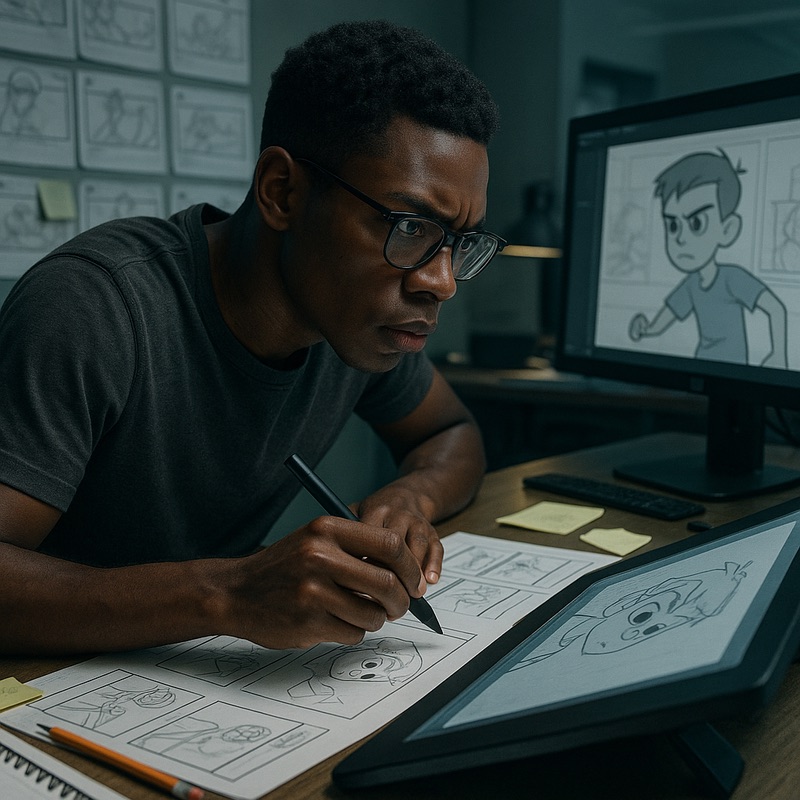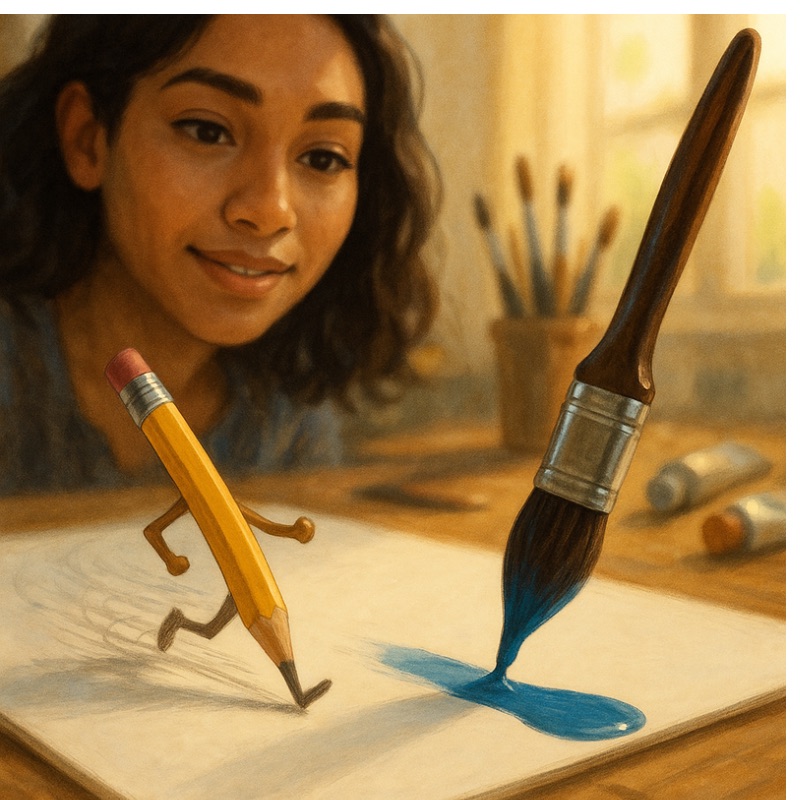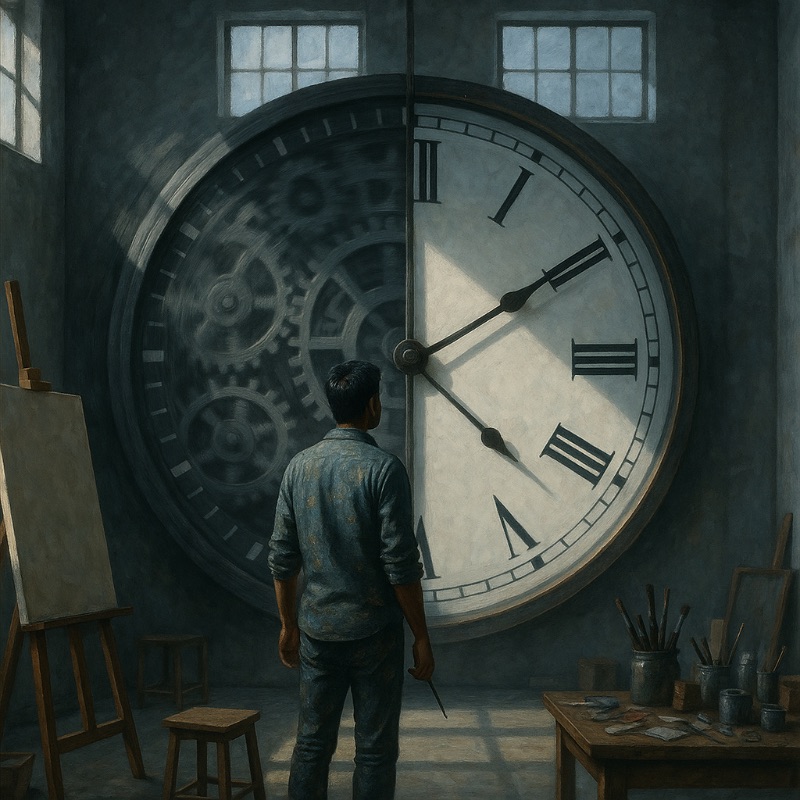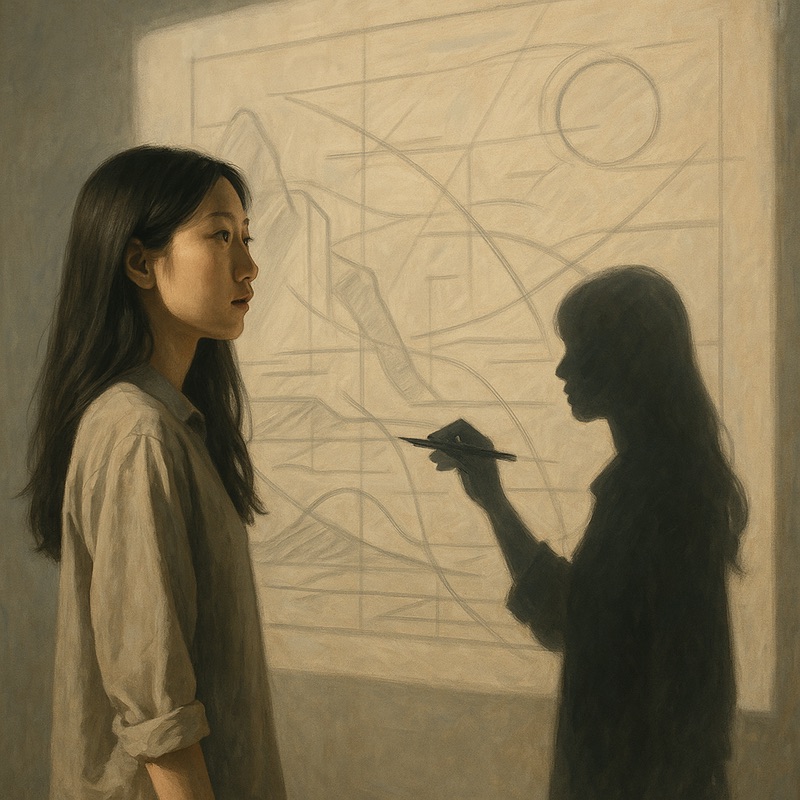You’re on a studio test with an hour left. Your thumbnails look solid and your line quality is clean. Then the reviewer asks, “Is this drawn for animation or for illustration?” Your stomach dips because you’re not sure how to answer without guessing. Before panic sets in, remind yourself that this isn’t about talent. It’s about clarity. You need a reliable way to decide which path you’re on so your drawings, drills, and portfolio pieces match the job in front of you. Knowing that gives you the power to act instead of freeze. In the next few minutes, you’ll get a clear map. We’ll define the core purpose behind each approach, compare the key differences you’ll feel while working, set focus areas for practice, try a quick two-part exercise, and finish with what professionals emphasize so you don’t waste time.

That quick glimpse puts you in the right headspace. One path focuses on motion across time. The other focuses on clarity in a single frame. Knowing which you’re doing changes every decision you make next.
What’s the Core Purpose?
Every project begins with one question: what is this drawing supposed to do? That question defines everything that follows. Animation drawings are frames in a sequence, while illustration drawings are self-contained images. The difference might sound small, but it changes the structure of your thinking. When you draw for animation, each image exists to set up the next. Your focus becomes rhythm, consistency, and movement. When you draw for illustration, your goal is to make one image deliver a complete idea instantly through color, composition, and lighting.

Back at your desk, you open your earlier sketch and realize it looked nice but didn’t move. You redraw the pose with clearer weight, shift the line of action, and suddenly the gesture flows. You’ve just applied the rule without naming it. Recognizing purpose turns guessing into intention, and that intention builds confidence in your work.
Key Differences Simplified
Once you define your purpose, your workflow changes. The main levers that shift between illustration and animation are consistency, timing, and storytelling. These levers decide what your audience feels and how your art communicates.

In animation, you control motion through repetition and pacing. The same character and design shift naturally from frame to frame. In illustration, you aim for visual impact in one image, changing style or color to make a single emotional point. The rules adapt depending on your goal, but not your awareness.
You scroll through your old projects and notice something. Your animated scenes drift in proportion, while your stills feel too safe. You rebuild your model sheet to stabilize design, then push your next standalone piece with stronger color. Adjusting these levers intentionally gives you both stability in motion and freedom in stillness. That clarity makes you faster, sharper, and more consistent.
When Learning, Focus Differently
Once you see how the levers work, your study time becomes strategic. Animation training builds timing, spacing, and consistent construction, while illustration training builds composition, color, and finish. It’s one skill tree, but each branch strengthens a different muscle.

Animation practice trains discipline by forcing you to draw frame by frame until the gesture breathes. Illustration practice trains vision by arranging shapes and values until everything reads instantly. Both sharpen observation, but they measure progress in different ways.
You sit down with your tablet, set a timer, and try both approaches. Fifteen minutes animating a bouncing ball. Fifteen minutes painting that same ball as a still image. The first builds flow. The second builds clarity. Together they strengthen each other. Your sense of motion improves your still design, and your sense of design improves your animation. Frustration turns into purpose.
Example for Beginner Practice
Theory sticks best when you apply it to movement. This short exercise helps you compare single-frame clarity with multi-frame motion. It’s quick, clear, and easy to repeat.

Start by drawing your character in one expressive pose, something that feels alive on its own. Then add three follow-up frames that carry that pose into motion. When you flip through them, you’ll see the difference right away. One skill builds emotion, the other builds movement.
Halfway through, you stop worrying about how to make your art better and start asking the right question: “Does this tell the story I want?” You fix spacing, refine arcs, and shape rhythm. What used to make you nervous now feels like focused practice. You’re solving your own problem through repetition and reflection.
Recording a short clip of the frames helps you spot flow problems. If it feels too sharp or too sluggish, that tells you which poses to refine on your next pass. Each cycle teaches you to see, correct, and control what once felt random.
What the Professionals Say
Every path has artists who’ve refined these lessons. Their advice always circles back to the same idea. Animation and illustration education divide according to different needs in the pipeline and portfolio development. Understanding this helps you decide which mindset fits your goals.
Animation training builds teamwork through storyboarding, rigging, and syncing across departments. Illustration training builds independence through personal style and concept clarity. Both require patience and strong observation, but they shape storytelling differently.
You take inventory of your habits. You might realize you love pacing, arcs, and collaboration, which points you toward animation. Or you prefer quiet focus, composition, and mood, which means illustration might be your natural lane. Once you know where to focus, you stop drifting between tutorials and start studying with intent. Clarity becomes momentum.
Final Thoughts
Before this, you were stuck between two answers. Now you have a system that works every time. Choose your practice to match the job. Sequence for animation, single-image impact for illustration. You identified your purpose, learned to adjust the right levers, built focus in your drills, and tested ideas that gave you intuition. You even confirmed what professionals already know. Each step replaced confusion with direction.
You walk out of your next critique ready to explain your choices clearly and confidently. You’ve solved the problem that once froze you and turned it into forward motion. Align today’s practice with tomorrow’s goal, and you’ll improve faster with cleaner results and less guesswork.
Source Material
Here are the references used to cross-check definitions, training methods, and professional perspectives.
- Should You Study Animation or Illustration? – The Animation Tutor
- Illustration vs Animation: Which Is More Effective? – ExplainVisually
- Illustration – Wikipedia entry
Each source reinforces how purpose shapes workflow and why understanding that purpose helps you learn faster.




























